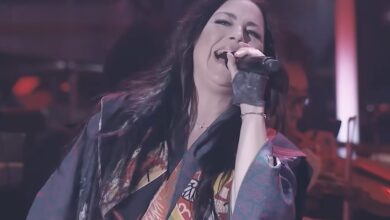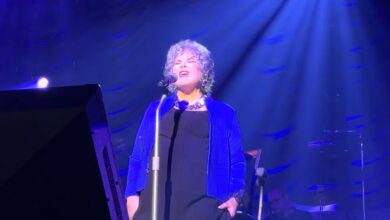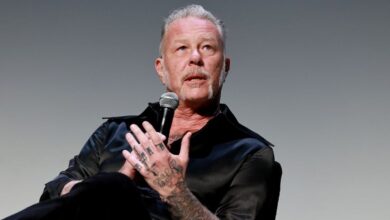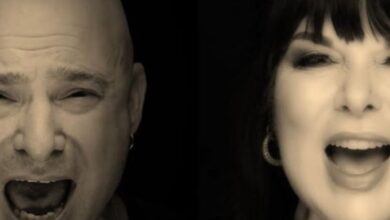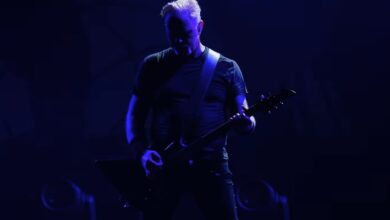The Poetry of Ice: Oona and Gage Brown’s Emotional Journey to Nothing Else Matters
When Oona and Gage Brown stepped onto the ice at Bryant Park, there was nothing flashy about the setting—just two siblings, a quiet winter backdrop, and the opening notes of Metallica’s Nothing Else Matters. Yet what unfolded in those next few minutes would leave audiences all over the world breathless, as if they were watching not just a performance, but a piece of living poetry.
From the first glide, there was an intimacy in their movements that drew people in. Their arms reached, their bodies curved, and their faces carried a weight that echoed the song itself. It wasn’t about impressing with technical tricks, though there were plenty of those—it was about honesty. Every step seemed to say: “This is who we are, and this is what this music means to us.”
What made the performance unforgettable was the fact that it was done in a single take. No edits, no second chances—just raw truth captured in one seamless flow. That decision alone elevated it beyond sport. It gave the piece a vulnerability, a sense that what the world was watching was unfiltered and real, much like the very essence of Nothing Else Matters.
The choice of song could not have been more daring. For decades, figure skating has relied on the elegance of classical music or the light familiarity of pop. But Metallica’s 1991 ballad carries a different kind of power—a rugged tenderness, a mix of strength and fragility. It’s a song born of honesty and stripped-down emotion, and the Browns took that essence and translated it into motion.
Oona and Gage are not just skating partners; they are siblings who share a lifetime of memories, joys, and struggles. That closeness radiated through their routine. When they reached for each other, it wasn’t just part of the choreography—it was a bond, lived and felt. That authenticity is what made the performance transcend sport and enter the realm of art.
There is a beauty in watching young athletes carry the depth of something far older than themselves. Metallica wrote Nothing Else Matters from a place of vulnerability, and here were two skaters—still early in their careers—giving those lyrics new life through movement. Their performance reminded the world that art has no boundaries; it can travel from a rock stage to an icy rink without losing its soul.
The moment also spoke to the courage of innovation. By skating to Metallica, Oona and Gage defied tradition and opened a door for figure skating’s future. They showed that art grows when boundaries are tested, when risks are taken, and when athletes dare to bring something unexpected to the ice. That courage resonated with fans, sparking millions of views online and igniting conversations about the future of the sport.
But beyond innovation, it was the emotion that left its mark. Viewers from across the globe commented that the performance brought them to tears. It wasn’t just the beauty of the choreography; it was the way the Browns embodied the spirit of the song. Vulnerability, trust, and connection—those qualities turned their routine into something universal.
Their journey to this moment makes it even more poignant. Both began skating as children, following in the footsteps of their older siblings. Hours of practice, sacrifices, and quiet dedication built the foundation for what the world witnessed that day. Their rise has not been overnight; it is the result of years of persistence, discipline, and the kind of work ethic that rarely makes headlines but always writes history.
As national medalists, Oona and Gage already had credibility in the skating world. But this routine gave them something different—something medals can’t measure. It gave them a place in the hearts of millions, a place reserved for those rare performances that capture more than skill; they capture the human spirit.
Music has a way of amplifying memory, and this performance is now inseparable from Nothing Else Matters. Just as the song spoke of intimacy and resilience in 1991, the Browns gave it new resonance in 2020s New York. They proved that music and movement can live together in perfect harmony, each one lifting the other higher.
Even their outside lives—playing in an Irish marching band, finding inspiration beyond the rink—feed into this artistry. They are not just skaters; they are storytellers, musicians in their own right, creators who weave their whole selves into what they bring to the ice. That fullness of life is what gives their routines such depth and sincerity.
The public’s embrace has been overwhelming. Social media flooded with admiration, fans praising not just their skill but their heart. The Browns’ routine became a reminder of why people turn to art in the first place—to feel, to be moved, to be reminded of something bigger than themselves.
For future skaters, this performance will serve as a lighthouse. It will remind them that greatness doesn’t always mean doing what’s expected. Sometimes greatness is found in choosing a song no one else would, in performing with vulnerability instead of perfection, and in letting your truth be seen.
In the end, Oona and Gage Brown’s Nothing Else Matters routine is more than a viral video or a competitive program. It is a moment etched into the collective memory of those who witnessed it. It’s proof that when music, movement, and human connection align, the result is timeless. Just like the song itself, this performance whispers across time: nothing else really does matter, except the truth you leave behind.
